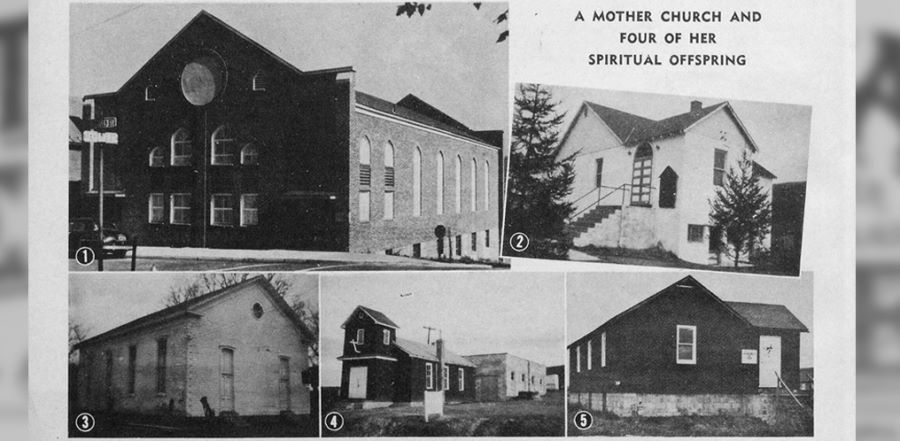Church Planting in the Assemblies of God: Cumberland, Maryland in the 1940s and 1950s
This Week in AG History — January 31, 1954 By Darrin J. RodgersOriginally published on AG-News, 03 February 2022 Church planting has always been part of the DNA of the Assemblies of God. While specific programs and personnel come and … Continue reading

Church Planting in the Assemblies of God: Cumberland, Maryland in the 1940s and 1950s

This Week in AG History — January 31, 1954
By Darrin J. Rodgers
Originally published on AG-News, 03 February 2022
Church planting has always been part of the DNA of the Assemblies of God. While specific programs and personnel come and go, each new generation of leaders has emphasized the importance of starting new churches. In the 1950s, the National Home Missions Department (now U.S. Missions) promoted the “Mother Church Plan.” This program encouraged each Assembly of God congregation to start a “daughter church.”
The Jan. 31, 1954, issue of the Pentecostal Evangel highlighted how one historic congregation, Central Assembly of God in Cumberland, Maryland, had started four churches in neighboring communities in the previous five years. Central Assembly of God, established in 1915, experienced a revival in 1939. As a result of this revival, young people in the church felt stirred to action and began holding prayer meetings in small towns without Assemblies of God churches. The prayer meetings developed into “outstations,” where small groups gathered for services in rented buildings, schoolhouses, or homes. Each outstation had a superintendent and was under the oversight of the “mother church.” A carload of people from Central Assembly of God, including speakers and musicians, would travel to the outstations to help with the services. The mother church financially and spiritually assisted its daughter churches in this manner until the new congregations grew and could become self-sustaining.
Central Assembly of God’s first daughter church to become self-sustaining was in Bedford Valley, Pennsylvania. By 1954 the Bedford Valley Assembly had an average attendance of 140 people. The Bedford Valley congregation soon mothered its own church in Rainesburg, Pennsylvania. The mother church, according to the Pentecostal Evangel article, had become a grandparent! Central Assembly of God planted two additional churches, in Fort Ashby, West Virginia, and Carpenter’s Addition, West Virginia.
Initially, some members of the Cumberland church were concerned that sending some of its best members to other communities to plant churches would weaken the mother church. However, the opposite proved true. The daughter churches broadened the mother church’s sphere of influence, and new leaders stepped up to fill the open ministry positions. The mother church became a ministry hub for a broader geographic region. In 1940, approximately 100 people attended Central Assembly of God’s Sunday School. By 1953, this number had risen to 342. The combined Sunday School attendance of the mother church and the daughter churches was about 700 people.
While the National Home Missions Department began promoting the “Mother Church Plan” in the 1950s, the concept had already been tried and found successful across the Fellowship. The 2009 General Council approved a similar program, whereby a church would be able to register its outreaches, which are distinct from the parent church, as “Parent Affiliated Churches.”
Read the article, “They Exist to Evangelize!” on pages 10-11 of the Jan. 31, 1954, issue of the Pentecostal Evangel.
Also featured in this issue:
• “A Marvelous Healing,” by Mrs. Lee Jones
• “Miraculous Healing and Conversion,” by John C. Jackson
And many more!
Click here to read this issue now.
Pentecostal Evangel archived editions courtesy of the Flower Pentecostal Heritage Center.
Do you have Pentecostal historical materials that should be preserved? Please consider depositing these materials at the Flower Pentecostal Heritage Center (FPHC). The FPHC, located in the Assemblies of God national offices, is the largest Pentecostal archive in the world. We would like to preserve and make your treasures accessible to those who write the history books.
Flower Pentecostal Heritage Center
1445 North Boonville Avenue
Springfield, Missouri 65802 USA
Phone: 417.862.1447 ext. 4400
Toll Free: 877.840.5200
Email: archives@ag.org
Website: www.iFPHC.org



